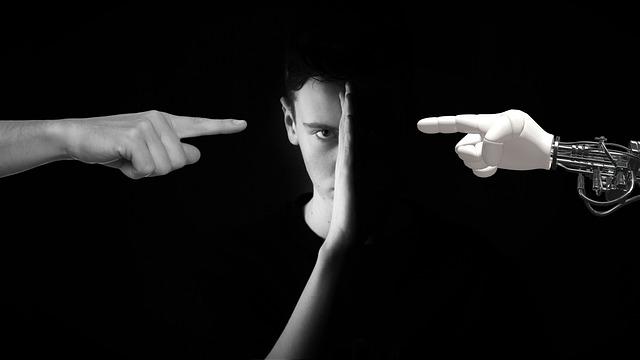In the glittering world of film and television, where every scene is meticulously crafted and every line is rehearsed to perfection, the harmony on set often belies the complex web of relationships behind the camera. While audiences are captivated by the seamless performances and compelling narratives, the reality for actors is far more intricate. Off-set conflicts, personal disagreements, and unspoken tensions can simmer beneath the surface, threatening the delicate balance of creativity and collaboration. This raises a pivotal question: should these personal conflicts be addressed head-on to foster a more harmonious on-set environment? In this exploration, we delve into the dynamics of off-set relationships, examining whether confronting these issues can enhance the creative process or whether it’s an intrusion into the personal lives of those who bring stories to life.
Navigating Personal Dynamics for Professional Excellence
In the vibrant world of film and theater, where creativity and collaboration intertwine, personal dynamics can significantly impact professional outcomes. When off-set tensions seep into on-set interactions, the harmony essential for artistic excellence may falter. Addressing personal conflicts between actors can enhance the collaborative environment, allowing creativity to flourish without unnecessary friction.
- Improved Communication: Facilitating open dialogues can help actors understand each other’s perspectives, fostering empathy and reducing misunderstandings.
- Enhanced Teamwork: Resolving conflicts off-set can build trust and strengthen relationships, promoting a more cohesive and supportive team dynamic.
- Increased Focus: With personal issues addressed, actors can concentrate fully on their performances, enhancing the quality of the production.
By investing in conflict resolution strategies, production teams can transform potential disruptions into opportunities for growth, ensuring that personal dynamics contribute positively to the artistic process.

The Impact of Off-Set Tensions on Creative Collaboration
In the intricate dance of film and theater production, the dynamics between actors can significantly influence the creative process. When personal conflicts arise off-set, they often cast a shadow over the collaborative spirit required on-set. These tensions can lead to a host of challenges, including:
- Disrupted Communication: Effective communication is the cornerstone of any successful project. Personal conflicts can create barriers, leading to misunderstandings and misinterpretations.
- Decreased Morale: A tense atmosphere can diminish enthusiasm and creativity, impacting not only the actors involved but the entire crew.
- Inconsistent Performances: Emotional strain may cause actors to deliver performances that lack the depth and nuance required for their roles.
Addressing these issues can foster a more harmonious environment, encouraging creativity to flourish. Implementing strategies such as mediation sessions and team-building activities can help alleviate tensions, allowing actors to refocus their energies on the shared vision of the project. By nurturing a culture of open dialogue and mutual respect, productions can transform potential discord into a powerful force for creative synergy.

Strategies for Mediating Conflicts to Enhance Performance
- Open Communication Channels: Establishing open lines of communication can help actors express their feelings and concerns in a safe environment. Consider organizing regular check-ins or mediation sessions where actors can voice their thoughts without fear of judgment. This not only alleviates tension but also fosters mutual understanding.
- Neutral Mediators: Introducing a neutral third party, such as a professional mediator or a trusted member of the production team, can facilitate constructive dialogue. These mediators can help guide conversations, ensuring they remain productive and focused on resolution rather than blame.
- Conflict Resolution Training: Providing training sessions for the cast and crew can equip them with tools to handle disputes effectively. This proactive approach empowers individuals to manage conflicts before they escalate, enhancing overall harmony.
- Setting Clear Boundaries: Establishing clear guidelines about acceptable behavior both on and off the set can prevent misunderstandings. Encourage actors to respect each other’s personal space and privacy, creating a more harmonious work environment.
By implementing these strategies, productions can transform personal conflicts into opportunities for growth, leading to a more cohesive and productive set. Empowering actors with the skills to navigate disagreements can ultimately enhance performance and collaboration.

Building a Culture of Respect and Understanding
- Foster Open Communication: Creating an environment where actors feel comfortable expressing concerns can significantly enhance understanding. Regular meetings and open forums can be beneficial, allowing cast members to voice issues and collaboratively seek resolutions.
- Implement Mediation Techniques: Introducing professional mediators to facilitate discussions can help navigate personal conflicts. This approach encourages a neutral ground where all parties can discuss grievances constructively.
- Encourage Empathy and Perspective-Taking: Training sessions focused on empathy can help actors understand each other’s viewpoints. Activities that promote perspective-taking can lead to a more harmonious and respectful atmosphere.
- Develop Clear Guidelines: Establishing clear guidelines for behavior and conflict resolution can preempt misunderstandings. Having a structured process ensures that conflicts are managed consistently and fairly.
- Promote a Positive Work Environment: Celebrating successes and fostering team-building activities can strengthen bonds among cast members. When actors feel valued and appreciated, it naturally enhances mutual respect and cooperation.

